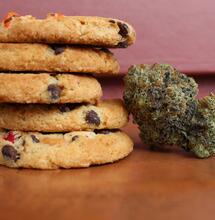Hesi GrowMix culture substrate

To match the range of fertilisers for soil and the specialised boosters, Hesi has also added a soil substrate to its product-range in 2020.
We are super excited to tell you about the journey to find the perfect partner, and all the ins-and outs about the advantages of the Hesi GrowMix. The qualitative characteristics of a soil were particularly important during production: stable, airy structure, water storage capacity and pH buffering. But maybe one of the most important requirements: sustainability. As with the fertilizers and boosters, Hesi follows its own unique path. Instead of the often used white perlite, Hesi GrowMix contains natural clay minerals which, in addition to their water retention function, also have ion exchange properties, i.e. they bind minerals and nutrients - and only release them when the roots need them. However, clay is not only a water and nutrient buffer, but with its buffering capacity against pH fluctuations, it also tolerates minor slips. In addition, the clay remains mixed in the substrate and does not float to the surface, as Perlite often does.
GrowMix’s consistency – what’s in it?
GrowMix consists of a 80% sustainable produced 50/50 mixture of white and black peat, which naturally has a high water and air capacity and is free of contaminants and germs. The other 20% is made up of regional, highly organic bark humus which, thanks to its medium sized and large pores, can easily absorb oxygen and water. This makes the GrowMix particularly breathable. The composting of the bark of coniferous wood releases numerous nutrients during decomposition and undesirable tannins are fermented. This makes the soil more fertile and revives the microflora - and as a nice side effect, brings a fresh, pleasant forest smell. As the icing on the cake, carbonated lime provides a stable pH value and improves the crumb structure. GrowMix contains the basic nutrients nitrogen, phosphorus and potassium as well as all trace elements for the first two weeks and ensures good growth of your plants. Depending on the plant type and size, fertilization should be started from the third week onwards. For more information check our website www.hesi.nl or follow the instagram/facebook accounts for the latest news items, tips & tricks or competitions @hesi_global, @hesi_dach, @hesi_france, @hesi_chile, @hesi_russia



